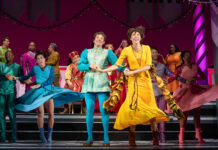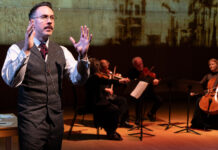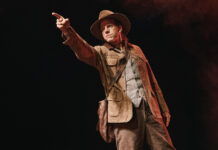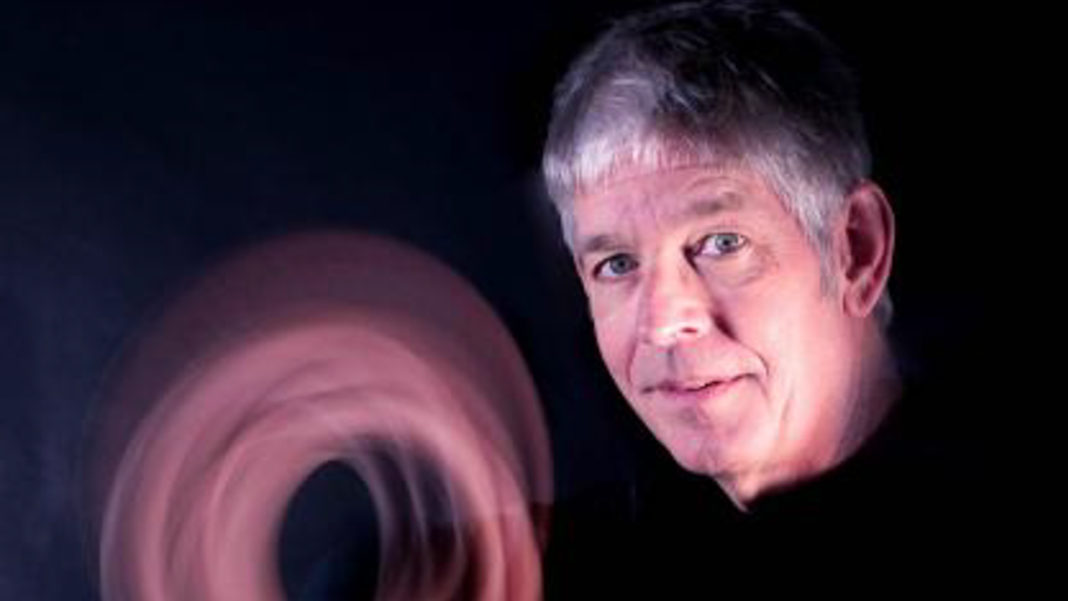From liftoff to splashdown, the Apollo 11 mission that put a man on the moon lasted 195 hours, 18 minutes and 35 seconds. Richard Wagner’s Ring Cycle typically lasts 17 hours. Performance artist, director and mime Andrew Dawson has condensed each of these accomplishments into just under 30-minute pieces. He begins performances of Space Panorama and Spirit of the Ring tonight in the rehearsal room at Royce Hall.
Dawson uses a small table, his hands and his body to tell each story from start-to-finish. They have, obviously, become significantly condensed. Space Panorama was created in 1987; Spirit of the Ring only six years ago.
About two weeks ago I spoke by phone with Dawson who was in Ireland at the time. In these excerpts from our conversation, we talked about his powers of observation, the inspiration for his work and the role of ridiculousness in his life and work.
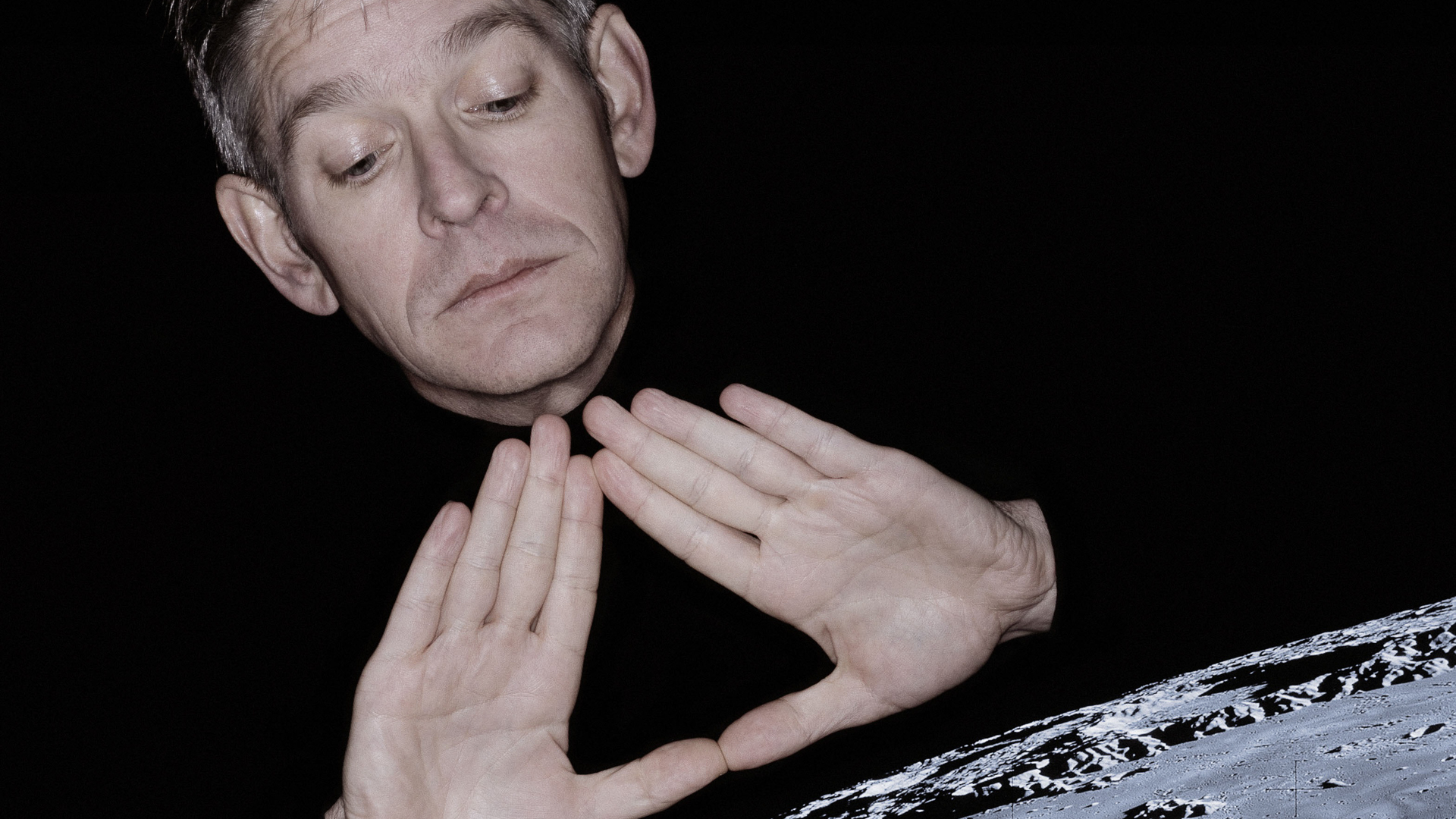
You studied mime with Philippe Gaulier. When did you realize you could tell stories with just your hands?
I suppose I came to mime itself when I was 16. I realized I could create images of pictures. It wasn’t until Space Panorama in 1987 that I realized you could tell a whole complicated story. You could tell more than just pictures about a whole narrative with your hands. Of course, it is my hands and me, but my hands are the main part.
What was the inspiration for Space Panorama?
I was asked by a festival in Northern England if I could make a piece of theatre using a table for a stage. I had always messed around with theatre directors saying, “I could make a whole story with my hands.” They said, “What story would you tell?” They gave me some money and now I’m stuck. I realized if you are going to do something small you want to tell the biggest possible story. I was always fascinated by space and I thought maybe I could do the moon landing.
Did creating and performing Space Panorama, which you’ve been doing for 32 years, give you any new insight into the moon landing or other aspects of that project?
Absolutely. As the years go by it’s just more and more extraordinary how that event of 1969 was. I knew it was remarkable at the time. You think of the technology of a car in 1969 compared to a car now. They went to the moon in that. It’s made it even more fascinating.
Spirit of the Ring was a commission from the Royal Opera House. What were your first thoughts when asked to truncate the Ring Cycle to 30 minutes.
Panic. [He lets out a very large laugh.] I can do the moon landing, I’ll figure it out. It took a long summer of watching. I had a DVD of the entire production and I broke it down. I looked at the various scenes and little by little distilled the story down to the highlights. I had to be brutal. The music is so beautiful. I hope in the end what I capture is the spirit of the Ring Cycle.
When something as lengthy as Wagner’s Ring Cycle can be successful told in 30 minutes, what does that say about the work itself?
That’s an interesting question. I think a little bit like The Lord of the Rings – the movie and the books – the power of these epic stories of love and lost power are universal stories. You can, in a way, capture the essence of the story and you get the emotion of the stories.
Between the Ring Cycle and the moon landing, which had the greatest impact on you personally?
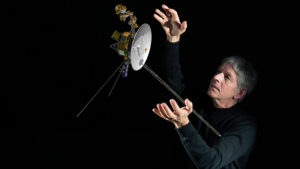
I suppose in some ways Space Panorama because I’ve been doing it for such a long time. It’s almost like when I’m performing, I’m watching the performance myself and then landing on the moon. I’m like a child in my own candy shop in my own show.
But I like the Ring because I love the music. I like that I can do grand opera in a miniature way. I do sort of create the images of a grand scale, but on a table. The stories are huge. There’s nothing small about it.
I can’t imagine that these works resonate on the same emotional level as your Absence & Presence which dealt with your father’s death. But is there an emotional connection you have with this material each time you perform it?
There’s an emotional connection to Space Panorama, partly now because I met some of the astronauts, but also because I talk to that little boy who was seven when it landed. I go back to that place where I was glued to the television in the middle of the night on the South coast of England.
When you watch people every day and see what they do with their own hands, how does that inspire you and what thoughts do you have doubt the way most people express themselves with their hands?
It’s always interesting where they put their hands. You notice most when they are awkward and their hands are not connected in some way. Often the subliminal stories are shown with the hands. You don’t know it until you pay attention to it. It’s like facial expressions. They are adding color to their story through their hands as they are speaking. If you tell someone to sit on their hands and tell a story, they can’t do it. Your instinct is that you are stuck. You realize how much your hands tell a story.
Your teacher, Gaulier, told The Guardian in an interview, “Ridiculousness is good for a clown. It’s good for everything. To feel ridiculous and sensitive is a part of freedom.” What role does ridiculousness play in your personal and professional lives?
Oh…probably keeps me grounded I think. By seeing the absurd and craziness in things it keeps the perspective in life. It keeps you authentic and honest, I think. You have to fix your feet on something.
For tickets go here.
Photos of Andrew Dawson by Nitin Vadukul courtesy of CAP UCLA and Dawson’s website.


